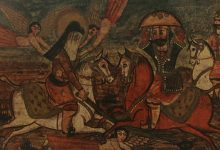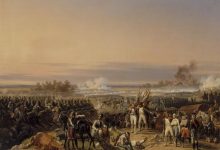The Battle of Verdun: A Turning Point in World War I
The Battle of Verdun, fought from February 21 to December 18, 1916, stands as one of the most iconic and devastating military engagements in history. Situated in northeastern France, it was a pivotal confrontation during World War I, involving French and German forces. Known for its scale, intensity, and the immense human cost, the battle left an indelible mark on the collective memory of both nations and the broader global context of warfare.
Background and Strategic Importance
Verdun, a town strategically located on the eastern border of France, was of great symbolic and military importance. The French regarded Verdun as a symbol of national pride and strength, a fortress holding the key to the defense of the country. For the Germans, the town represented a weak point in the French defensive line, making it an attractive target for their military planners.
The German High Command, under the leadership of Erich von Falkenhayn, sought to weaken the French Army by forcing them into a battle of attrition. The German strategy was to “bleed France white” by attacking Verdun, knowing that the French would be compelled to defend it at all costs. As a result, Verdun became the site of one of the longest and most brutal battles of World War I.
The Prelude to Battle
In early 1916, the Germans launched an attack on Verdun, aiming to capture the fortified positions around the town. The French, under the command of General Philippe Pétain, were determined to hold the line, as the town’s defense had become a symbol of French resistance. The French military leadership, despite the German onslaught, understood that losing Verdun would have significant psychological and strategic consequences for the nation.
The Germans initiated the battle with intense artillery bombardments, which would come to define much of the battle’s nature. The use of heavy artillery caused massive destruction and created vast craters, marking the landscape for years to come. This was the beginning of what would become a protracted siege, characterized by entrenched positions, incessant artillery exchanges, and overwhelming casualties.
The Course of the Battle
The battle was fought primarily on the land, with both sides employing entrenched positions, barbed wire, and fortified structures. The fighting was relentless, with the front line moving back and forth over the same ground multiple times. The Germans initially made significant advances, capturing key positions such as the fortresses of Douaumont and Vaux. These captures, however, did not prove decisive, as the French dug in and mounted a determined defense.
The French response to the German offensive was marked by logistical ingenuity and the use of fresh troops. France deployed its elite units, including the famed French Foreign Legion, to reinforce their positions. The French also used the railways to transport soldiers and supplies to the front, which allowed them to maintain a steady supply of reinforcements. As the battle dragged on, the French counterattacks began to regain lost ground, culminating in the recapture of Fort Douaumont in October 1916.
The nature of the battle was gruesome, with soldiers enduring horrific conditions in the trenches. The constant bombardment, lack of food, and unsanitary conditions led to widespread disease and suffering. The psychological toll on soldiers was immense, as they faced not only the enemy but also the horrors of modern warfare, including poison gas, the constant threat of death, and the pervasive sense of isolation.
The Outcome and Consequences
The Battle of Verdun concluded in December 1916, but its outcome was a stalemate. Neither side achieved a decisive victory, and the town remained in French hands. However, the cost of the battle was astronomical. The French suffered approximately 350,000 casualties, while the Germans lost around 330,000 men. The human toll was staggering, and the battle is often remembered as a symbol of the futility and senselessness of war.
While there was no clear winner in the battle, the French emerged with a psychological victory. The defense of Verdun had become a rallying cry for the French people, symbolizing their resilience and determination in the face of overwhelming adversity. The battle also marked a turning point in the war, as it demonstrated the brutal nature of modern warfare and the extent to which nations would go to achieve military objectives.
In the broader context of World War I, Verdun had significant strategic implications. The battle drained both French and German resources, and while the Germans failed to achieve their objective of breaking the French Army, the French were forced to divert significant resources to the defense of the town, weakening their overall position on other fronts.
Legacy and Commemoration
The Battle of Verdun has since become a symbol of sacrifice and national pride for France. The town is home to several memorials, cemeteries, and museums dedicated to those who fought and died there. The French government commemorates the battle annually, and Verdun remains a pilgrimage site for those wishing to pay homage to the fallen soldiers.
The battle’s legacy also shaped the military strategies of future generations. The use of massive artillery bombardments, the emphasis on entrenched defensive positions, and the focus on attrition warfare all became hallmarks of 20th-century military conflicts. The lessons learned at Verdun would influence future battles, particularly during World War II, where similar tactics were employed on both the Eastern and Western Fronts.
Conclusion
The Battle of Verdun was a defining moment in World War I, illustrating the horrors of modern warfare and the human cost of conflict. It remains a testament to the resilience of the human spirit, with both the French and German soldiers enduring unimaginable hardships. While the outcome was a draw, the battle had far-reaching consequences for the course of the war and the post-war world order.
As a military engagement, Verdun was a symbol of both the


